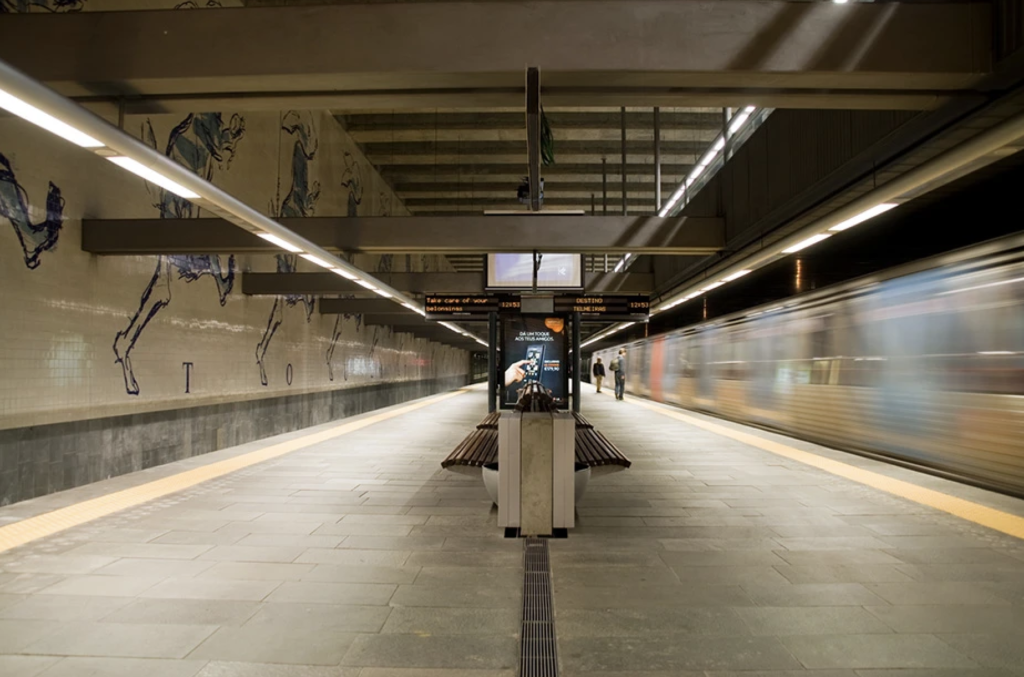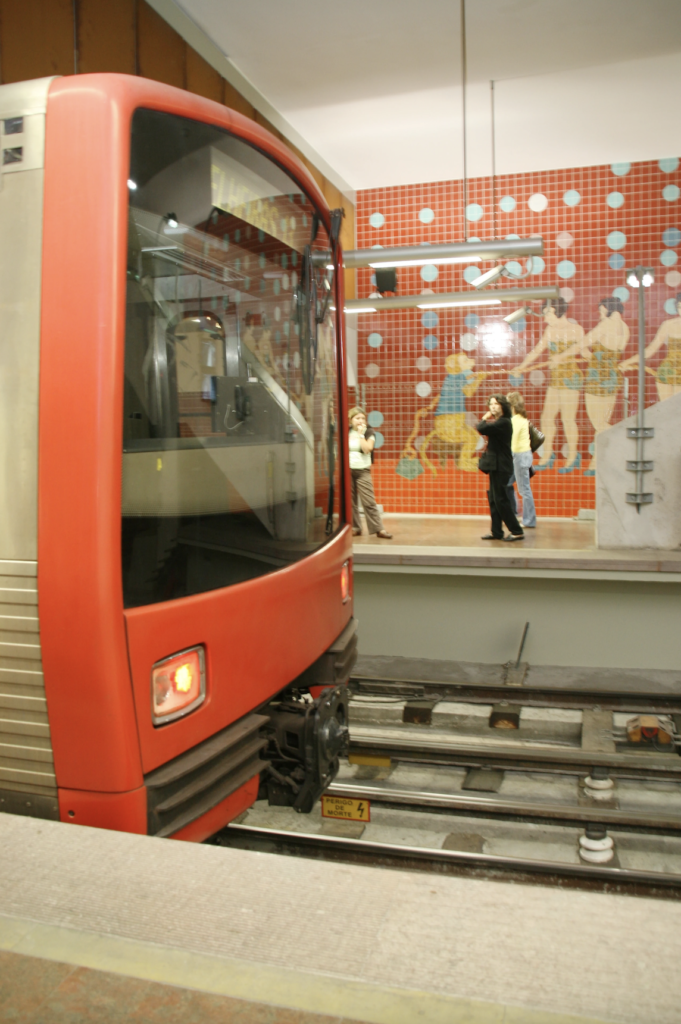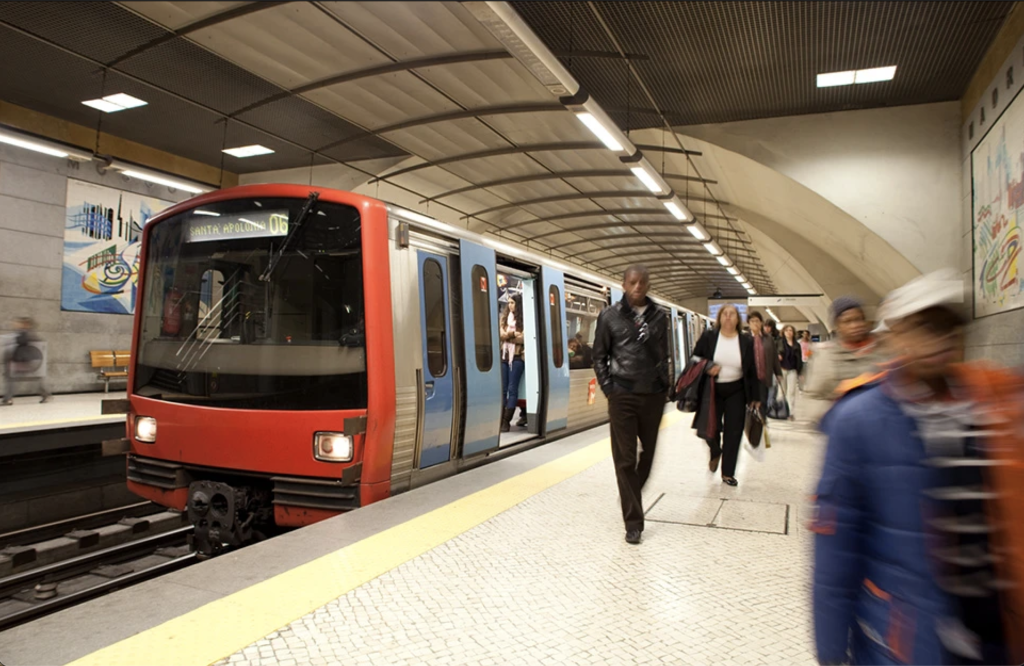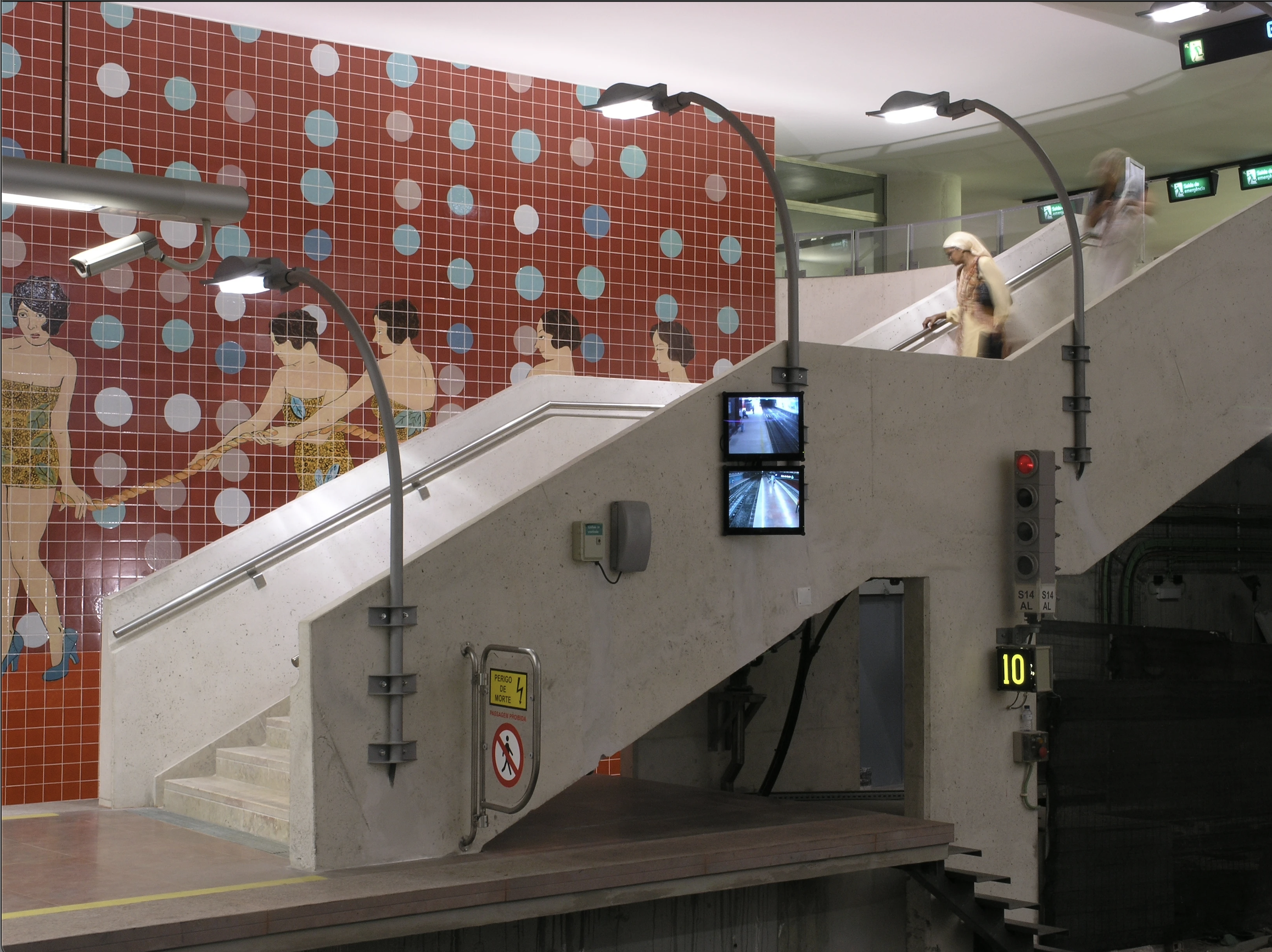Here at Pedestrian Space, we greatly value art and its role in municpal projects and public spaces. We recently had the opportunity to interview the Lisbon Metro Company, metrolisboa.pt, on the role of art in their public transport system.
“The pandemic, with its extended confinement periods, revived the people’s pleasure for walking and enjoying ample, comfortable and pleasant spaces. This new reality had wide implications in mobility patterns and has led to a pronounced increase in the use of soft modes: walking, biking and scooter riding, for instance.“
Metropolitano de Lisboa
Pedestrian Space: What is the relationship of art and public transport in Lisbon?
Metropolitano de Lisboa: Since its inception, the Lisbon Metro has always been interested in humanizing and making its public spaces more attractive by decorating the network stations. This has been a concern since the Lisbon Metro’s opening, in December 1959, when an architect and an artist were commissioned with the design and decoration of the first stations of the network. The architectural and artistic projects were integrated and complementary right from the start, so that the stations’ functionality went hand-in-hand with their aesthetic appeal from the moment of conception. The careful architectural and artistic undertakings seek to connect the city’s underground to its surface. For the most part, each metro station embodies an artistic theme that is related to its geographical location.
Pedestrian Space: How does the public art connect with the city identity in Lisbon?
Metropolitano de Lisboa: The Lisbon Metro has a long history of sponsoring the arts and the artistic heritage of public spaces to promote the humanisation of the city of Lisbon, by introducing in its stations the works of art by several renowned national and international artists.
In addition, to make art accessible to everyone, the Lisbon Metro has, over the years, offered Lisbon several sculptures and art works that are scattered around the city. It has also established an international cultural exchange programme to offer and receive works of art from several metros around the world.
Pedestrian Space: Other than the metro, what are the public transport options in Lisbon?
Metropolitano de Lisboa: The main transport operators in the Lisbon Metropolitan Area are:
- Metropolitano de Lisboa – metro
- Carris – buses
- Transtejo/Soflusa – ferries
- Barraqueiro – buses
- CP – suburban and long distance trains
- Transportes Sul do Tejo – buses
- Rodoviária de Lisboa – buses
- Scotturb – buses
Transportes Metropolitanos de Lisboa, is the government entity responsible for transport in the Lisbon Metropolitan Area.

“The careful architectural and artistic undertakings seek to connect the city’s underground to its surface. For the most part, each metro station embodies an artistic theme that is related to its geographical location.”
Metropolitano de Lisboa
Pedestrian Space: How has public transport in Lisbon been affected by the pandemic?
Metropolitano de Lisboa: The COVID-19 pandemic led to a very steep drop in demand and revenue in the overwhelming majority of Portuguese companies. There was a drop of approximately -53% in accumulated ticket validations by December 2020, which represents nearly -92 million validations when compared to 2019.
In line with the drop in demand, fare revenue in 2020 also had a strong decline. Considering the payments on account, the drop in revenue is estimated at -27% which, in absolute terms, represents a loss of 32 million euros when compared to 2019.
However, despite this unfavourable backdrop, due to the nature of the essential services that the Lisbon Metro provides the community, it never closed its doors, stopped its services or even reduced supply so that the trainloads were always less than 66% of their maximum capacity, to ensure the safety of both travellers and staff. The company even invested in new cleaning and safety measures for its trains, stations and facilities, in order to control the spread of the pandemic.
Over the coming months, the Lisbon Metro foresees a progressive return to normal in the use of public transport as a result of the vaccination plan underway, among other factors. The Lisbon Metro maintains its commitment to promote safe urban mobility, both from a health and an environmentally sustainable standpoint.

Pedestrian Space: Has your office observed an increase in interest for walking and space for pedestrians in recent years (and particularly during the pandemic)?
Metropolitano de Lisboa: The pandemic, with its extended confinement periods, revived the people’s pleasure for walking and enjoying ample, comfortable and pleasant spaces. This new reality had wide implications in mobility patterns and has led to a pronounced increase in the use of soft modes: walking, biking and scooter riding, for instance.
The Lisbon Metro believes that transport operators, along with local and regional authorities, will continue to create the conditions to stimulate the use of soft modes, namely by creating bike parks and paths, as well as awareness campaigns for the use of “green” transport modes. The integration of payment systems/car park fees (IT) with other transport modes (heavy, soft and green), and the creation of urban tolls to limit the access of private cars, as well as promoting public transport supply in these areas, will bring about successful measures
“Over the coming months, the Lisbon Metro foresees a progressive return to normal in the use of public transport as a result of the vaccination plan underway, among other factors. The Lisbon Metro maintains its commitment to promote safe urban mobility, both from a health and an environmentally sustainable standpoint.”
Metropolitano de Lisboa

Answers provided by Frederico Leonel of the Lisbon Metro Company, Metropolitano de Lisboa at https://www.metrolisboa.pt/

